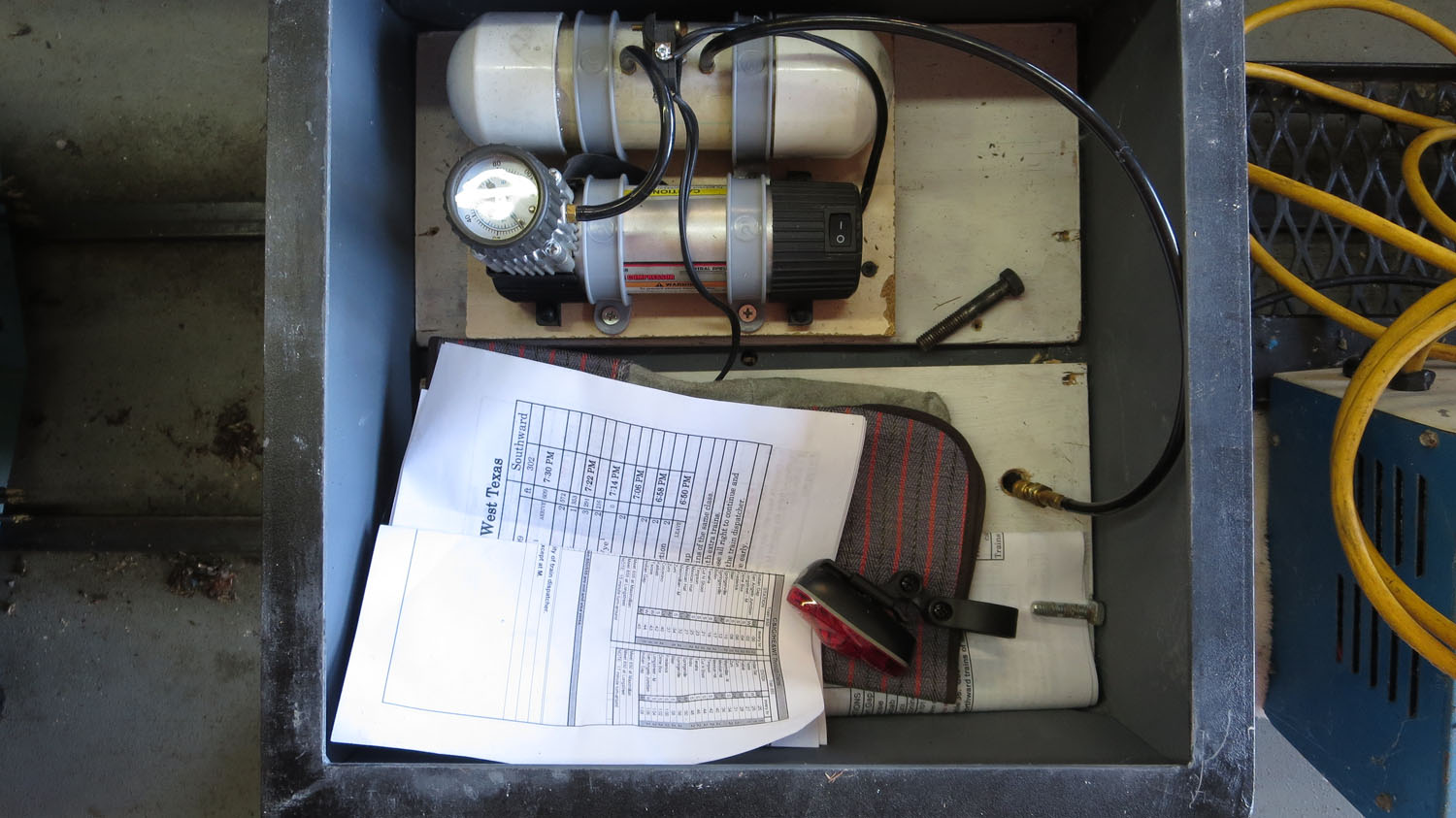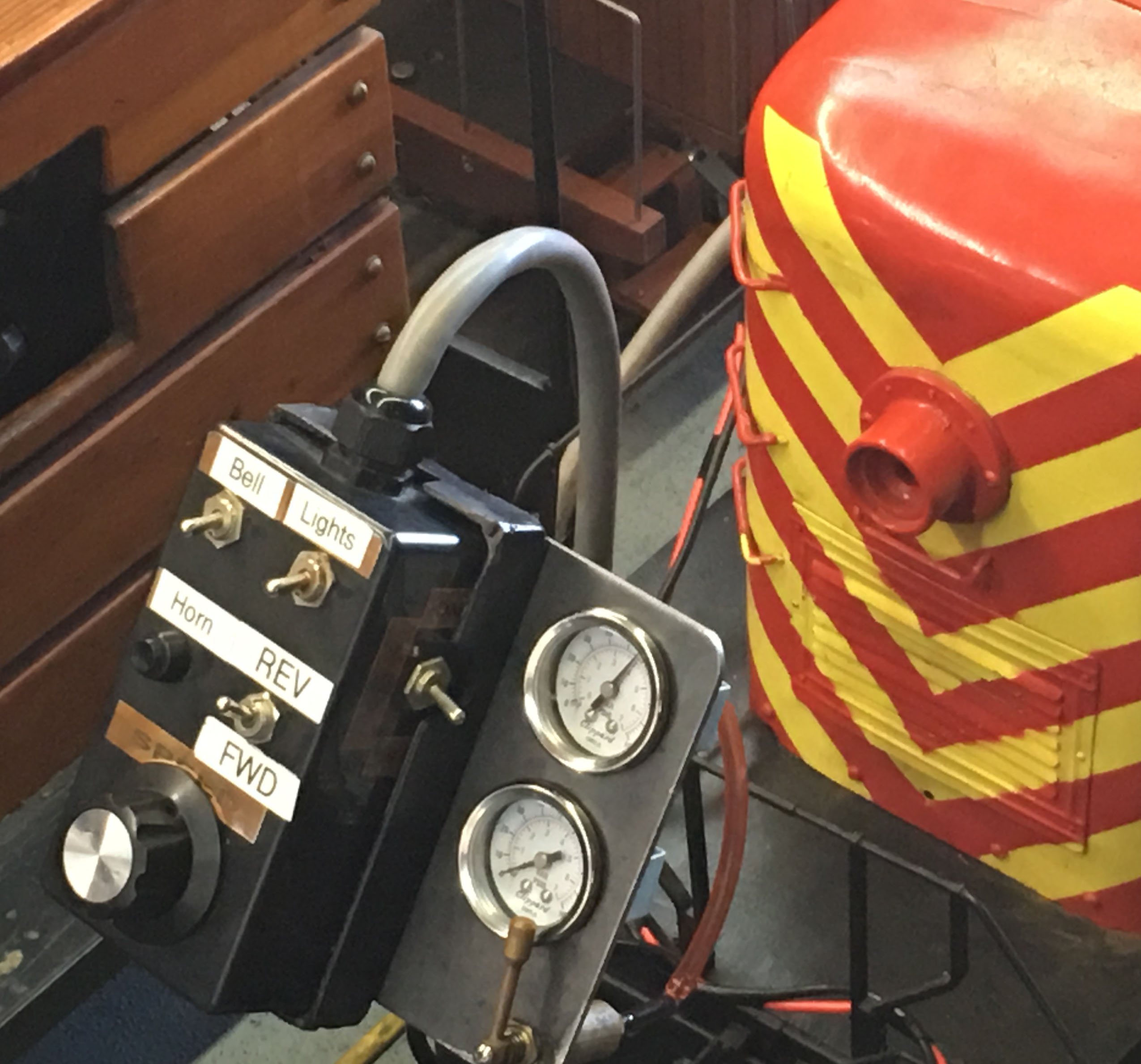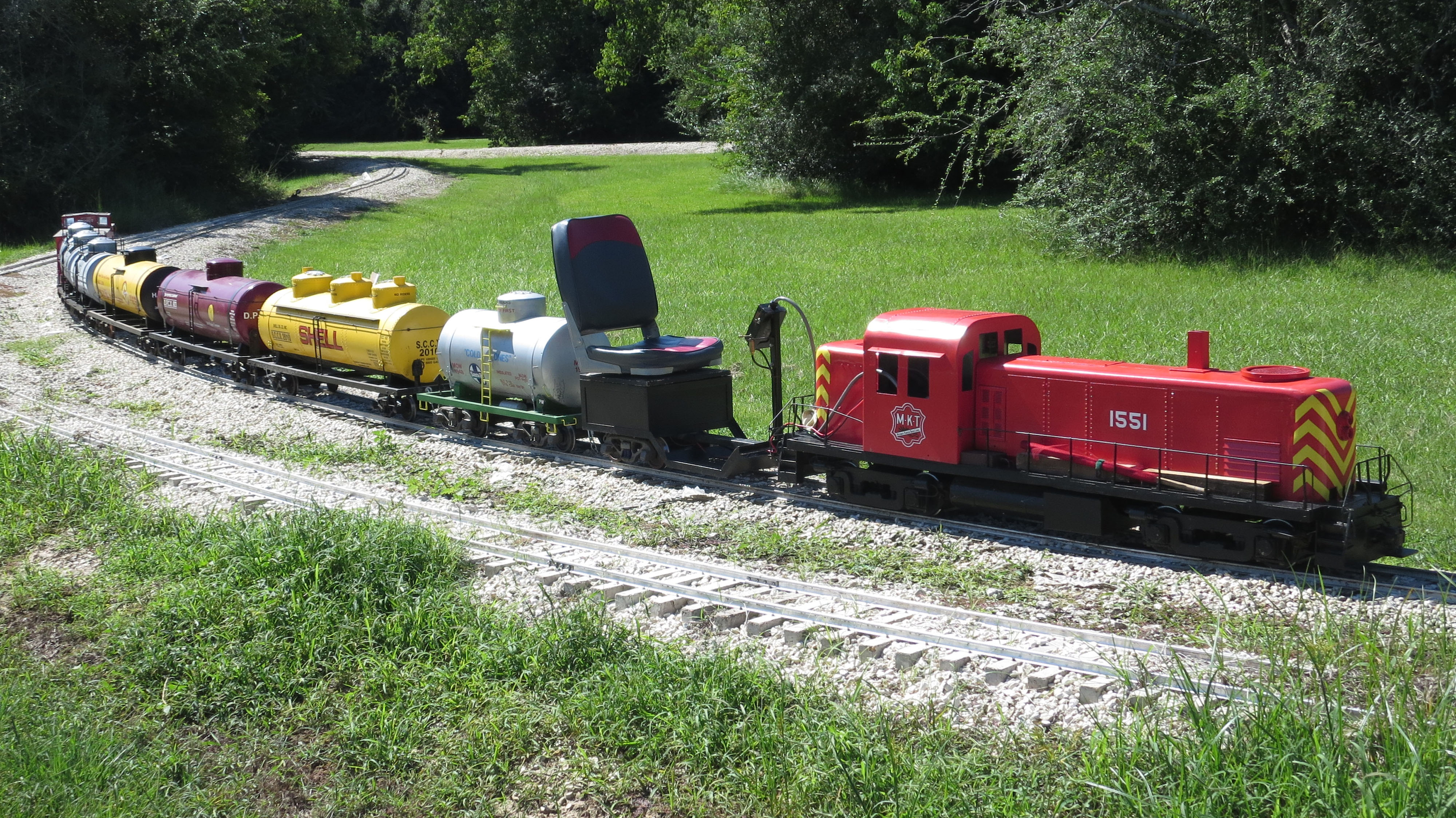The Alco RS-3
Updated March 2016
The End
History - From Wikipedia at:
https://en.wikipedia.org/wiki/Missouri%E2%80%93Kansas%E2%80%93Texas_Railroad
When it incorporated in May 1870, the Missouri–Kansas–Texas Railroad immediately acquired the Union Pacific Railway, Southern Branch (est. 1865) and its 182 miles (293 km) of track in Kansas. (Union Pacific Railway was, for a period of several years in the late 19th century, the official name of the unrelated Union Pacific Railroad, which later acquired MKT as part of the Missouri Pacific Railroad.)
At the time of 1870 incorporation, consolidations were also made with the Labette & Sedalia Railway Co. and the Neosho Valley & Holden Railway Co.; MKT also acquired the Tebo & Nosho Railroad Co., the St. Louis & Santa Fe Railroad Co., and the Hannibal & Central Missouri Railroad Co. Combined with the UP Southern Branch, these small, newly built railroads formed the foundation on which the Katy would build.
Congress had passed acts promising land grants to the first railroad to reach the Kansas border via the Neosho Valley. The Katy portion of the former UP Southern Branch, which had begun building from Fort Riley just north of Junction City, Kansas, was in a heated competition for the prize. On June 6, 1870, Katy workers laid the first rails across the Kansas border, winning the race. Congress' promised land grants were never made, as the courts overturned the grants because the land was in Indian Territory and was the property of the Indian tribes.
The Katy continued its push southward, laying track through the territory and reaching Texas in 1872, acquiring other small railroads while extending its reach to Dallas in 1886, Waco in 1888, Houston in April 1893 and to San Antonio in 1901.
When the Katy railroad reached Houston, its joint ownership of the Galveston, Houston and Henderson Railroad gave it immediate access to the Port of Galveston and its ocean-going shipping on the Gulf of Mexico.
In 1896, as a publicity stunt set up by William Crush, the Katy crashed two locomotives head-on, pulling loaded trains, at a site that came to be known thereafter as Crush, Texas. The collision occurred before more than 40,000 spectators, three of whom died (and several were injured) by debris from the exploding boilers. The ragtime composer and pianist Scott Joplin, who was performing in the area at the time, commemorated the event in his song "The Great Crush Collision March" (which he dedicated to the Missouri-Kansas-Texas Railway).
In 1911, the MKT purchased railroad lines held by the industrialist Joseph A. Kemp of Wichita Falls, Texas. These included the Wichita Falls Railway, an 18-mile line between Wichita Falls and Henrietta in Clay County; the Wichita Falls and Northwest Railway Company of Texas; and the Wichita Falls and Wellington, which provided service into Wellington in Collingsworth County. Kemp's brother-in-law, Frank Kell, was a partner in some of these lines, including the Wichita Falls and Southern Railroad, which remained a Kemp-Kell property until it was abandoned in 1954. In 1923, the Katy acquired another Kemp/Kell property, the Wichita Falls and Northwestern Railway, which extended from Wichita Falls to Forgan in the Oklahoma Panhandle. The route to Forgan was abandoned in 1973, and Altus, Oklahoma, became the northern terminus of the railroad. The remaining 77-mile link between Wichita Falls and Altus was absorbed in 1991 by the Wichita, Tillman and Jackson Railway. The Katy acquired the Beaver, Mead and Englewood Railroad in 1931.
From 1915 until January 4, 1959, the Katy, in a joint venture with the St. Louis – San Francisco Railway (popularly known as the Frisco), operated the Texas Special from St. Louis to Dallas, Ft. Worth, and San Antonio. It sported rail cars with names including Sam Houston, Stephen F. Austin, David Crockett, and James Bowie after prominent men of the state.
In 1988 the Missouri Pacific Railroad (MoPac) and its owner, Union Pacific, purchased the Katy with approval from the Interstate Commerce Commission. The merging and restructuring of railroads during the 1980s had cost the Katy much overhead traffic, and it had been seeking a merger partner. On December 1, 1989 the Katy was merged into the MoPac, which is now part of the Union Pacific system.
In the "rails to trails" program, much of the Missouri track line has been adapted for use as the Katy Trail State Park, including a spur to Columbia, a Missouri State Park which runs along the Missouri River for part of its route. In downtown Dallas, a 3.5-mile (6 km) long section called the Katy Trail is being converted into a multi-use trail linking White Rock Lake to the American Airlines Center.
In 1997 the segment linking Katy, Texas to downtown Houston was abandoned, and stripped of rails soon after. The section between Katy and Interstate 610 was purchased by the Texas Department of Transportation in 1998 for the expansion of Katy Freeway. The line that went into Houston was purchased by the city's Parks and Recreation Department. In 2009 it was adapted and paved as the Heights Bike Trail.
As part of a new heritage program, in July 2005 Union Pacific unveiled a new EMD SD70ACe locomotive, Union Pacific 1988, painted in traditional MKT colors.
Paint schemes
1870–1880s, Early steam locomotives were dark maroon, with large oval medallion on the side and back of the tenders, with a field of Chinese vermillion and the letters M. K. & T. R. W. inside the oval and on the side of the crew cab, a one and one-half inch gold line on the outer edge, and the number of the engine in the center of field in gold, black shaded and split on the rear of the tender. All passenger engines were finished with gold lettering and striping. Rolling stock used colors common in those days, i.e. boxcar brown, caboose red, etc.
1880s–1900s, Steam locomotive livery was simplified after the Jay Gould gained control of the railroad. Gould instructed shop personnel to paint all engines black and place the railroad initials M. K. & T. in about 12 inch letters on the side of the tender tank bordered by half inch striping. The engine number was placed on side of the crew cab, side of the sand dome, coping of the tender and back of tender.Rolling stock used colors common in those days, i.e. boxcar brown, caboose red, etc.
1900s–1923, Steam locomotive livery was simplified to overall shiny black, dark graphite smokebox, smokebox door and stack. The color of all lettering and numbers was changed to white. The road name, M. K. &. T. was moved to the side of the crew cab, along with the engine number. The engine number was painted on the side of the tenders in large numerals and on the rear in smaller numerals; the number remained on the sand dome. Rolling stock used colors common in those days, i.e. boxcar brown, caboose red, etc.
1928–1947 Steam locomotives were shiny black with the MKT herald on their tenders. Rolling stock used colors common in those days, i.e. boxcar brown, caboose red, etc.
1947–1957, Diesels were bright red with silver side panels and cream yellow on top of the nose hoods. Passenger cars were painted to match. Boxcars, cabooses, and other rolling stock were frequently painted Sloan Yellow (named for MKT President Matthew S. Sloan).
1957–1965, Diesels were painted an orange-red with yellow MKT and road numbers. The herald was changed to read simply "Katy" in red letters on a gold background. The text and herald were outlined in black.
1965–1971, The Katy returned to a bright red paint, perhaps deeper than that used 1947-1957. They also returned to the original herald.
1971–1988, Diesel locomotives, cabooses, and other rolling stock were painted green with yellow stripes, lettering and numbering. The first Katy locomotive painted into this scheme was GP7 #123.
In its final years, the Katy acquired several locomotives second-hand which, due to its impending acquisition by Union Pacific, were not painted into the standard green and yellow scheme. MKT acquired 18 GP40s from Conrail in late 1983 that were numbered 231-248.
A set of nine GP39-2s were acquired from Kennecott Copper Corporation in late 1984. Ex KCC #779-783, 785, and 787-789 were renumbered MKT #380-388.
In 1985, three additional GP38s were purchased from Conrail that were numbered 322-324 and finally, 19 GP38ACs were purchased from Illinois Central Gulf and numbered 325-343. The changes in MKT's red paint were most likely due to problems with fading in the intense Texas sun. This may also have been the reason to change to green in 1970.
Diesel - Electric Locomotives Pre-1960
Numbers (1960-88) Quantity Model Builder Date HP
1551-1563 144-156 13 RS3 ALCO 1951 1600

ALCO RS-3 No. 1551 at HALS with string of Tank Cars by Gary Brothers
February 2016
Additional Photos at Bottom of Page
Miscellaneous Detail Photos


The Air Brake System
(Located under Engineer Seat)
The Control Panel
(Located on Stalk at Front of Engineer Car)
(Air Pressure Gauges and labels added March 2016)
Dimensional Data - ALCO RS-3
Wheel Diameter - 40"
Wheelbase - 39' 4"
Width - 10' 1 5/8"
Height - 14" 5 1/8"
Weight - 247,100 Lbs
Prime Mover - Alco 244 D later changed to EMD 567
V12 4 Stroke Diesel Turbocharged
Generator - GS GT-581
Tractive Effort - 61,775 Lbs
The Air Horns & Bell
(Located under Rear Cab Section)
(Note Battery Tray Underneath, Air Pump Power Cord Lower Left))
Rear Battery
(White Zip Cord is 12 Volt Feed to Air Compressor located under Engineer's Seat)
(Since this photo, it has been replaced with different wiring)
Front Battery
(Main Fuse Holder at Center Top of Photo)

The First Ride !
08 August 2015
Photo by Rick White Jr.

MKT Rail Map from American-Rails.com










